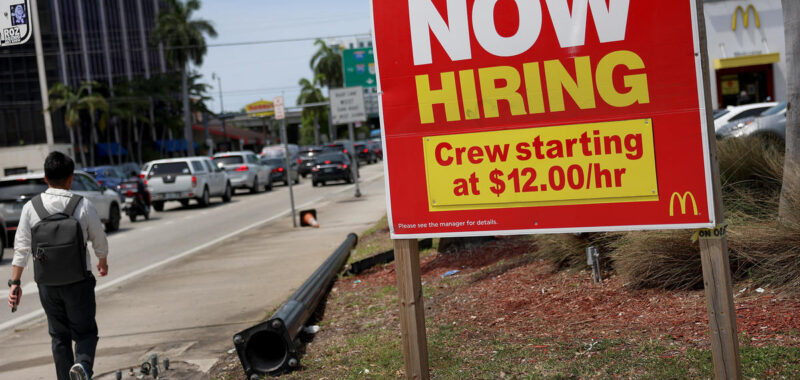Employers added 142,000 jobs in August, representing fewer new positions than the 160,000 that had been forecast by economists.
Unemployment eased slightly to 4.2%, in line with expectations, according to data released Friday by the Bureau of Labor Statistics. In July, employers added 114,000 jobs — later revised downward to 89,000 jobs — far fewer than economists had forecast, while the unemployment rate jumped to 4.3%.
The July data sparked fears that the U.S. labor market is showing cracks under the highest interest rates in 23 years, causing markets to tumble.
Wall Street is closely watching today’s jobs report for clues for how it might influence the Federal Reserve’s next rate decision, which is scheduled for September 18. Economists are unanimous in predicting the central bank will shave its benchmark rate at that meeting, but are split on whether the rate could be shaved by 0.25 percentage points or 0.5 percentage points, with many foreseeing a bigger cut if the job market shows additional signs of weakness.
Fed Chair Jerome Powell last month signaled that bank officials are planning for a September cut, saying “the time has come” for the central bank to adjust its monetary policy given signs that inflation continues to cool. He didn’t disclose the size of the expected cut, however.
“Today’s weak jobs report should solidify the case for a rate decrease this month by the Fed and may warrant additional policy easing if the trend continues,” Eric Merlis, managing director and co-head of global markets at Citizens, said in an email. “The economy continues to add jobs, but it has shifted into a lower gear and policymakers should take that as a call to action.”
The Fed is increasingly focused on risks to the labor market, given the central bank’s confidence that inflation is on a path toward its annual 2% goal, noted Nancy Vanden Houten, lead U.S. economist at Oxford Economics, in a September 5 report.
She added, “Overall, the labor market is still relatively healthy, mainly because layoffs remain low, but appears increasingly vulnerable to a scenario where rising unemployment triggers a cycle of reducing spending and greater job losses.”
Hiring in August was in line with average job growth in recent months, but below the average monthly gain of 202,000 during the prior 12 months, the BLS said on Friday.
— This is a breaking story and will be updated.

